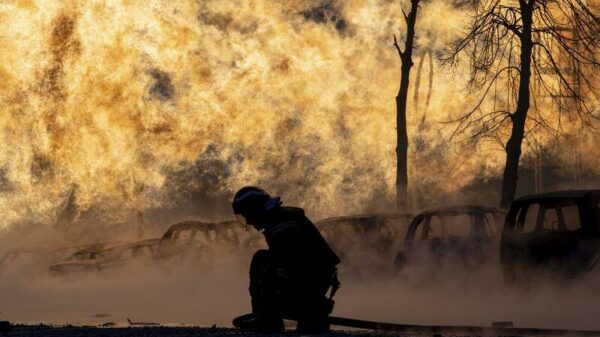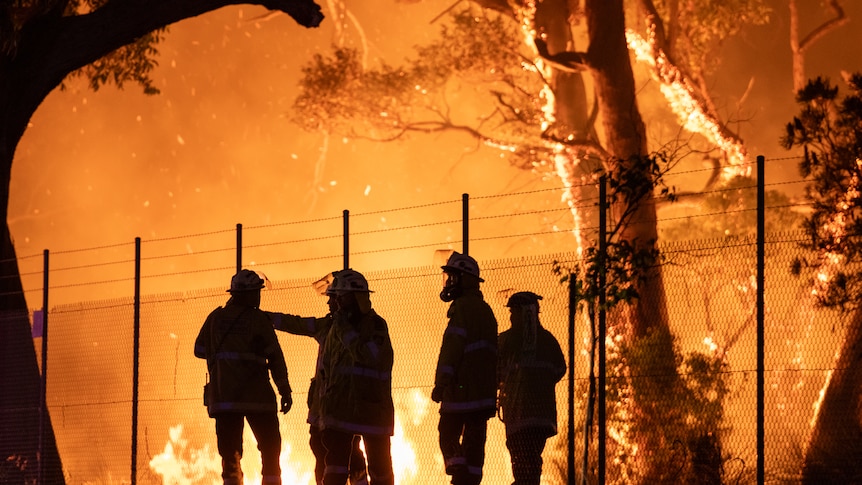The latest bushfire outlook from the Australian and New Zealand Council for Fire and Emergency Services (AFAC) indicates that this spring will present a heightened risk of bushfires across several regions in Australia. Due to above-average rainfall in northern Western Australia, emergency services are preparing for a busy season, particularly in areas facing increased fire danger.
According to AFAC’s spring 2025 bushfire outlook, regions in Western Australia, South Australia, and Victoria are expected to experience elevated fire risks. Communities are urged to remain vigilant, especially in areas where fire risk is typically normal. The forecast suggests that the combination of warmer-than-average temperatures and low probabilities of rainfall will further exacerbate the situation.
Key Regions at Risk
In Western Australia, specific areas such as the Dampier Peninsula, Derby Coast, and Central Kimberley are highlighted as having a significantly increased risk of bushfires. The region has seen above-average rainfall over the past two seasons, which has resulted in increased fuel cover. Additionally, unburned and ungrazed surface fuels in the south-eastern Pilbara and Little Sandy Desert pose additional threats, as tropical lows have also contributed to this fuel growth.
As conditions become warmer, some pastoral areas with above-average grass cover may face a heightened fire risk toward the end of spring. Local authorities are actively engaged in mitigation efforts, advising WA residents to prepare their properties and update bushfire plans as necessary.
In South Australia, certain eastern regions, including parts of the Riverland and Murraylands, are seeing increased fire risks due to severe rainfall deficiencies. The outlook indicates that rainfall in forested and dense mallee areas is taking longer to penetrate the soil, leading to concerns about dry conditions.
In Victoria, drought-affected areas, particularly in the west, south-west, central regions, and south-west Gippsland, have also been identified as having an increased fire risk this spring. The lack of rainfall could result in faster drying of some areas, causing a greater risk later in the season.
Monitoring and Preparedness
Rob Webb, CEO of AFAC, emphasized the importance of community preparedness in light of the upcoming bushfire season. He stated, “No matter where you live or travel this season, everyone can play an important role in bushfire safety this spring by being prepared and staying alert to warnings and advice.” Webb encouraged individuals to create a bushfire plan, which could be crucial in an emergency.
The Bureau of Meteorology has noted that above-average rainfall has been recorded across northern Western Australia, the Northern Territory, Queensland, and parts of northern and eastern New South Wales. The Bureau also indicated that storm severity and weather systems in spring could be influenced by above-average sea temperatures along Australia’s coast. Furthermore, from September to November, regions in northern, western, and south-eastern Australia may experience above-average daytime temperatures.
In contrast, the outlook suggests that Tasmania should prepare for an early start to the fire season due to ongoing dry conditions. For New South Wales, while the risk remains normal due to higher-than-average rainfall and average daytime temperatures, southern areas recovering from drought are under close observation, particularly if rainfall does not materialize.
The fire risk outlook highlights that the Northern Territory may continue to see typical dry-season fires until early rains arrive, while grass fires in Queensland are expected to be monitored closely due to variable spring and summer conditions.
As Australia heads into spring, emergency services and communities alike are being called to action, with the potential for another challenging bushfire season on the horizon.





























































